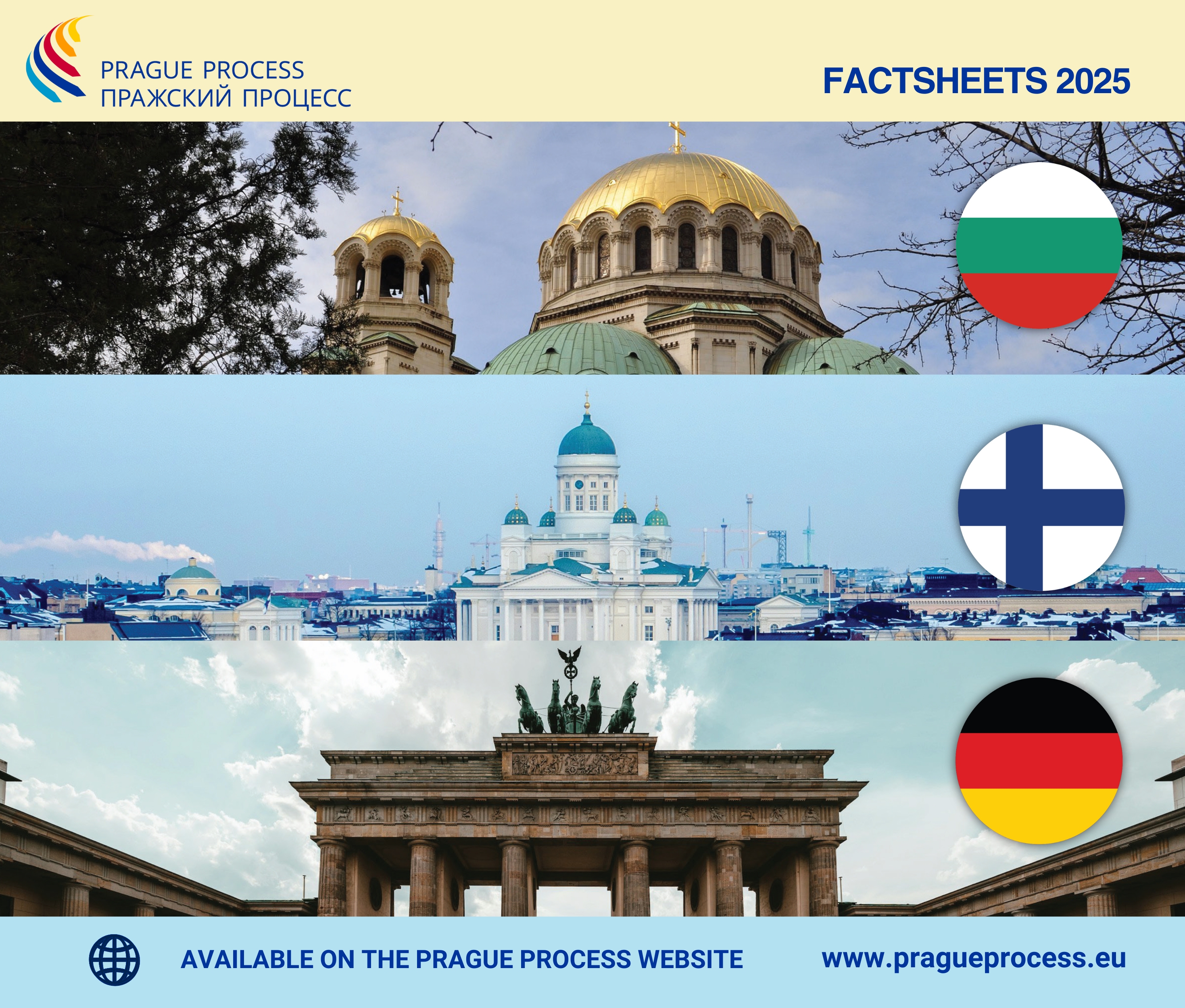We have the pleasure to inform you that the Prague Process has introduced the regular update of the country factsheets, now featuring the latest migration-related trends and policy developments in Bulgaria, Finland and Germany.
Here are a couple of highlights that offer a glimpse into recent developments. Explore the full version of the factsheets to review the detailed analysis and data.
Bulgaria: Extensive diaspora and growing labour immigration
- Bulgaria has one of the largest diasporas in Europe and Central Asia. According to UNDESA, as of 2024, 1,252,234 Bulgarians lived abroad, with the majority residing in Europe (851,797), Türkiye (348,052) and Northern America (20,592).
- Immigration to Bulgaria has been gradually increasing in the past five years. In 2024, Bulgaria registered 52,189 immigrants, and the number of first residence permits issued to non-EU nationals in Bulgaria nearly doubled between 2015 and 2024. Notably, the number of first permits for issued for work more than tripled between 2021 and 2024, reflecting growing demand for foreign labour.
- Sexual exploitation remains the most common form of human trafficking in Bulgaria, predominantly affecting women and girls, particularly in the capital, resort areas, and border towns. However, recent reports show a decrease in the number of identified child trafficking victims, with most of victims being Bulgarian nationals, many from Roma and Turkish minorities, unemployed individuals with low levels of education, and children without parental care.
Finland: Rising immigration flows and ongoing governance reforms
- Since the late 1980s, Finland has evolved into a country of immigration. In 2024, the immigration flow approached 64,000 – the second largest figure since the 1990s – with most immigrants being citizens of Ukraine, the Philippines, Nepal, Sri Lanka and Sweden. The number of first residence permits issued to non-EU nationals doubled from 2019 to 2024.
- As of July 2025, 74,685 beneficiaries of temporary protection resided in Finland. A study found that 67% of respondents had actively sought employment, while only 30% were employed, mainly in the food industry (17%), property maintenance, including cleaning (12%), and manufacturing (12%).
- Finland's migration governance framework has undergone significant reforms in recent years. The changes aim to strengthen integration, employment, language skills, while promoting equality and positive interactions between population groups. In March 2025, the Government proposed further amendments to the Citizenship Act.
Germany: Continued labour demand and reinforced border controls
- Germany is a major country of immigration, with population growth driven by sustained net migration. Since 2011, the population has risen by over 3 million people, reaching 83,6 million in 2024, including 12,4 million non-German nationals. According to UN DESA, over 16,8 million migrants lived in Germany as of 2024, with the largest groups coming from Poland, Türkiye, Ukraine and Russia.
- Germany offers multiple employment opportunities for skilled migrants due to persistent labour shortages. Many labour migrants are qualified or highly qualified workers from Türkiye, Kosovo*, Bosnia and Herzegovina, Albania, Serbia, North Macedonia and the US. Nationals of the Western Balkan countries account for ca. 27% of all labour migrants in Germany.
- In 2024, Germany was among several EU Member States that reintroduced temporary internal border controls at all land borders. Border rejections rose steadily through 2023-2024, with the share of intercepted individuals who applied for asylum dropping from 45% in 2023 to 23% in the first half of 2024, affecting nationals of Afghanistan, Syria, and Iraq.
All the factsheets can be accessed through the interactive map here.
The factsheets offer concise and valuable insights in the migration landscape of these countries, providing data from both national and international sources. They also highlight key developments in migration policies and legislation. While the national data is updated by the Secretariat and ICMPD colleagues as well as external experts, the data from international sources is refreshed automatically as it becomes available.
Our Repository contains the latest publications of the Migration Observatory and Training Academy of the Prague Process.
Subscribe to the Prague Process mailing list here in order to keep up to date with the latest developments through our Quarterly Review.

